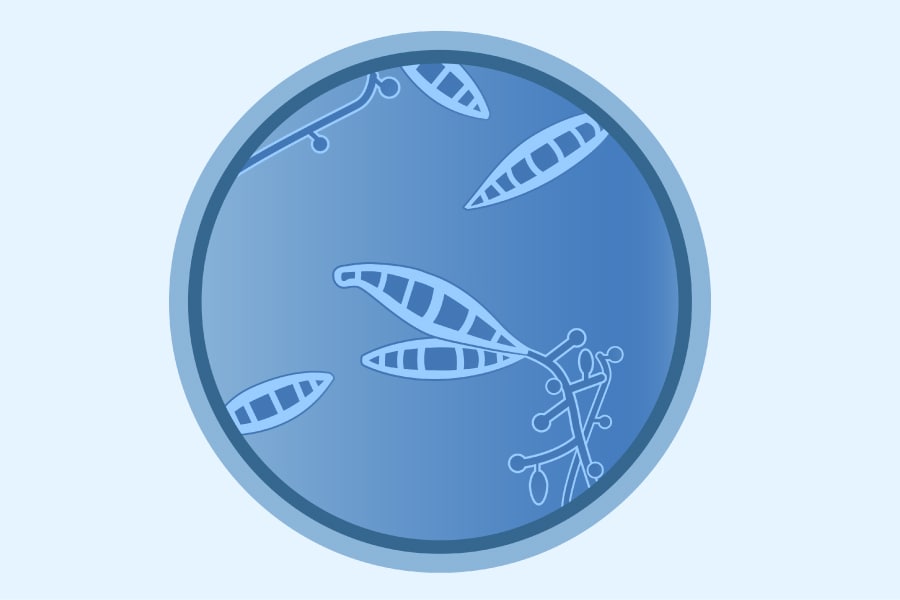About Ringworm

Medical illustration of Microsporum canis, one of the types of fungi that causes ringworm
Ringworm is a common infection of the skin and nails that is caused by fungus. The infection is called “ringworm” because it can cause an itchy, red, circular rash. Ringworm is also called “tinea” or “dermatophytosis.” The different types of ringworm are usually named for the location of the infection on the body.
Areas of the body that can be affected by ringworm include:
- Feet (tinea pedis, commonly called “athlete’s foot”)
- Groin, inner thighs, or buttocks (tinea cruris, commonly called “jock itch”)
- Scalp (tinea capitis)
- Beard (tinea barbae)
- Hands (tinea manuum)
- Toenails or fingernails (tinea unguium, also called “onychomycosis”) Click here for more information about fungal nail infections.
- Other parts of the body such as arms or legs (tinea corporis)
Approximately 40 different species of fungi can cause ringworm; the scientific names for the types of fungi that cause ringworm are Trichophyton, Microsporum, and Epidermophyton.1
References
- Havlickova B, Czaika VA, Friedrich M. Epidemiological trends in skin mycoses worldwideexternal icon. Mycoses. 2008 Sep;51 Suppl 4:2-15.
Page last reviewed: February 26, 2021